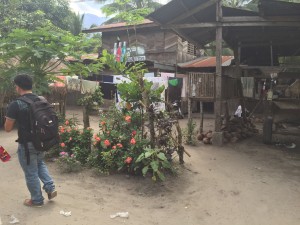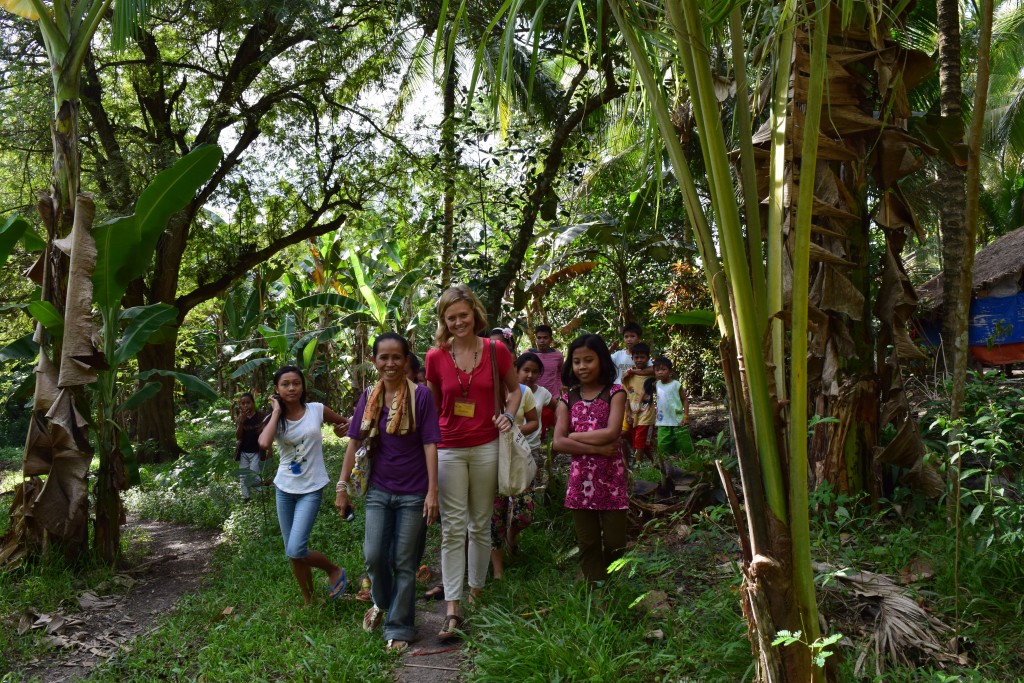I’ve recently become very interested in trying to better understand the connection between war and empires and trade and religion, specifically religion as an economic system and set of trade alliances and principles. This is particularly relevant in Mindanao, where both Islam and Catholicism arrived as a consequence of trade. The specific details of how Islam arrived to Southeast Asia are still debated, but the general consensus is that it came with traders, not warriors, and in the case of Mindanao, mostly from other SE Asian islands and from India, often Sufis, creating trading networks largely replacing the collapsed Buddhist trading blocks that had existed there before. When the Spanish arrived in what is now the Philippines, they were seeking better access to and control of trade routes over sea to China and Japan. Their encounter with the Muslims in Mindanao was seen in the context of the long years of Islamic trade domination in Spain, a context that had a large influence on the shaping of Spanish Catholicism as an empire building force. I thought of the old monopoly of the gold dinar when I heard that ISIS/DAESH announced plans to issue the gold dinar once more as part of its new self-proclaimed caliphate.
So it shouldn’t seem like an innovation to see religion assert itself as the answer to not only what we now consider to be spiritual questions, but to other core questions that religions as systems have historically addressed such what community order or regulation of relationships to each other and to the environment best ensures survival, security, and access to needed resources, where do “we” end and where do “they” begin, what are fair terms for exchange, how do we respond to external or internal threats, etc., issues we associate now with the realms of politics or economics. Answering these questions becomes complex in a place like Mindanao, in the context of hundreds of years of colonialism, and where there is a mix of tribal identities, unique languages, specific local customs, and key environmental and geographical features; for instance the Lumad (according to a 2000 census) represent only about 8.9% of Mindanao’s population, but there are approximately 30 ethno-linguistic groups within that minority. There is a significant variety among the Moro groups as well, who represent only around 18% of the population and include 13 Muslim ethno-linguistic groups.
Unsurprisingly, the two biggest modern candidates for unifying these identities to shape a coherent response to a number of stresses in Mindanao have been ethno-nationalism and religion, which continue to be inextricably entangled. When negotiated agreements between the government and the ethno-nationalist separatist/autonomy movement lead by the MNLF resulted in neither real self-determination nor an improvement in living conditions, religion has increasingly been relied on as a the most powerful medium for a unified response. The MILF has a much more explicitly Islamic agenda, although it’s primary goals are much the same as the ethno-nationalist goals of the MNLF.
Many in the west view any Muslim political group, armed or not, as Islamist, an incorrect assumption in Mindanao in most cases, although globalization brought not just transnational corporations but transnational “Arabized” Islam into Mindanao as well, itself something of a colonial force for the uniquely syncretic Islam that has traditionally been practiced there. In the 1990’s, there were some funding and training relationships with al-Qaeda, as well as some personal contacts with Osama bin Laden (in the case of the MILF these were quickly and explicitly disavowed following the 9/11 attacks in the US). But even the original demands of the notorious Abu Sayyaf were still local and echoed ethno-nationalist demands, despite a more markedly Islamist ideology. Abu Sayyaf was founded by a man who had fought with the mujahedeen in Afghanistan. This was in the 1980’s, somewhere around the time that the “valiant and courageous Afghan freedom fighters” were hosted in the Oval Office by President Ronald Reagan.
The late 1980’s were of course a major turning point. Since the end of the Second World War, the great competing empires were the US and the Soviet Union or specifically, the religious war of the day being soviet communism vs western liberal capitalism; the famous American anti-communist Joseph McCarthy spoke passionately in the 1950’s about “the great difference between our western Christian world and the atheistic Communist world” and a “final, all-out battle between communistic atheism and Christianity.” But in 1989 the Soviets withdrew from Afghanistan and the Berlin Wall came down. But meanwhile, with much less fanfare, Osama bin Laden, who had been involved in raising funds for the Afghani mujahedeen for many years, founded al-Qaeda. It also happened to be the year that Ferdinand Marcos, infamous dictator of the Philippines and the author of the time of martial law during which so many in Mindanao saw their homes, lands and lives go up in flames, died in Honolulu.
I have read that the armed wing of the Communist Party of the Philippines, the NPA (New People’s Army), launched in 1969, three years before Marcos’ martial law was declared, is today responsible for a much higher incidence of violence in Mindanao than Muslim groups, and the military personnel we met with in Mindanao also emphasized the NPA in particular as their most formidable threat, and yet for better or worse, it is still the Moro Muslim groups, not the armed Maoists, that attract the most international attention and concern.
A lot has certainly changed since the end of the Cold War era.
..But then again, a lot has stayed the same.



